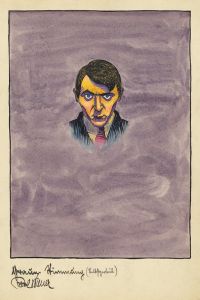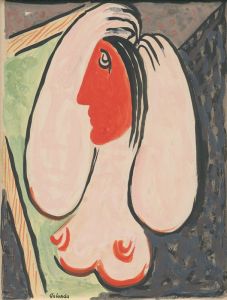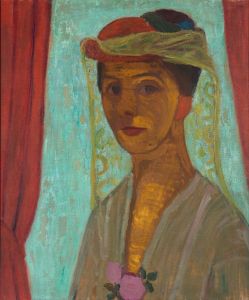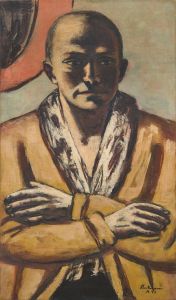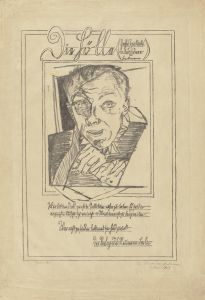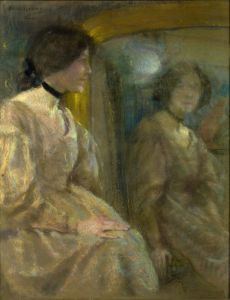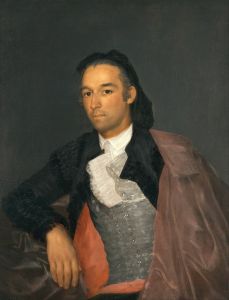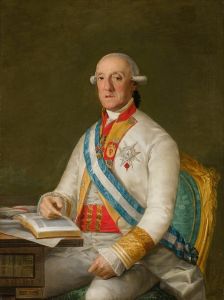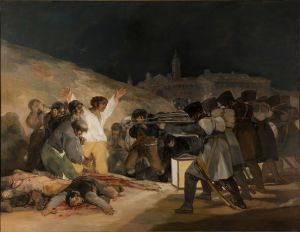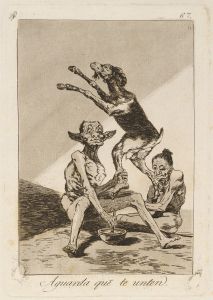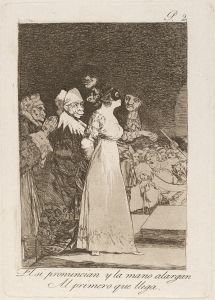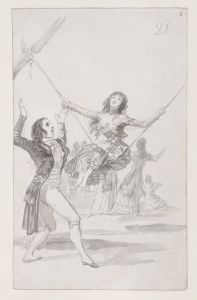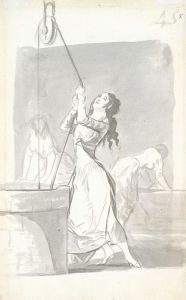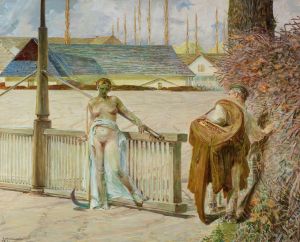
Self-portrait; Goya wearing a top hat facing left within a drawn frame
A hand-painted replica of Francisco de Goya’s masterpiece Self-portrait; Goya wearing a top hat facing left within a drawn frame, meticulously crafted by professional artists to capture the true essence of the original. Each piece is created with museum-quality canvas and rare mineral pigments, carefully painted by experienced artists with delicate brushstrokes and rich, layered colors to perfectly recreate the texture of the original artwork. Unlike machine-printed reproductions, this hand-painted version brings the painting to life, infused with the artist’s emotions and skill in every stroke. Whether for personal collection or home decoration, it instantly elevates the artistic atmosphere of any space.
Francisco de Goya, one of Spain's most renowned painters, created numerous self-portraits throughout his career, each offering a glimpse into his evolving self-perception and artistic style. One such work is "Self-portrait; Goya wearing a top hat facing left within a drawn frame." This piece is a testament to Goya's introspective nature and his ability to convey complex emotions and ideas through portraiture.
The self-portrait is believed to have been created during the latter part of Goya's life, a period marked by personal and political turmoil. By this time, Goya had already established himself as a prominent court painter and had experienced significant changes in his personal life, including a severe illness that left him deaf. These experiences profoundly influenced his work, leading to a darker and more introspective tone in his later pieces.
In this self-portrait, Goya presents himself wearing a top hat, a fashion accessory that was popular among the European elite during the late 18th and early 19th centuries. The choice of attire not only reflects the fashion of the time but also Goya's status as a respected artist within the Spanish court. The top hat adds an element of sophistication and modernity to the portrait, aligning Goya with contemporary trends and societal norms.
The composition of the portrait is notable for its simplicity and focus on the subject. Goya is depicted facing left, a pose that allows viewers to engage with his profile, emphasizing his thoughtful expression. The drawn frame around the figure is an intriguing element, suggesting a sense of confinement or introspection. This framing device may also serve to highlight the artist's self-awareness and his contemplation of his place within the broader context of society and art.
Goya's use of light and shadow in this portrait is characteristic of his mature style. The subtle play of light across his face and the dark background create a sense of depth and realism, drawing attention to the artist's features and expression. This technique underscores Goya's mastery of chiaroscuro, a skill that he employed to great effect in many of his works.
The self-portrait is not only a reflection of Goya's artistic prowess but also a window into his personal world. It captures a moment of introspection, offering insights into the mind of an artist who was deeply affected by the events of his time. Goya lived through a period of significant political upheaval in Spain, including the Peninsular War and the subsequent restoration of the monarchy. These events, along with his personal struggles, are often thought to have influenced the somber and reflective nature of his later works.
While "Self-portrait; Goya wearing a top hat facing left within a drawn frame" is not as widely discussed as some of his other self-portraits, it remains an important piece within his oeuvre. It exemplifies Goya's ability to convey complex emotions through portraiture and his continued exploration of self-identity. This work, like many of Goya's portraits, invites viewers to consider the interplay between the artist's personal experiences and his artistic expression, making it a valuable contribution to the study of Goya's life and work.





